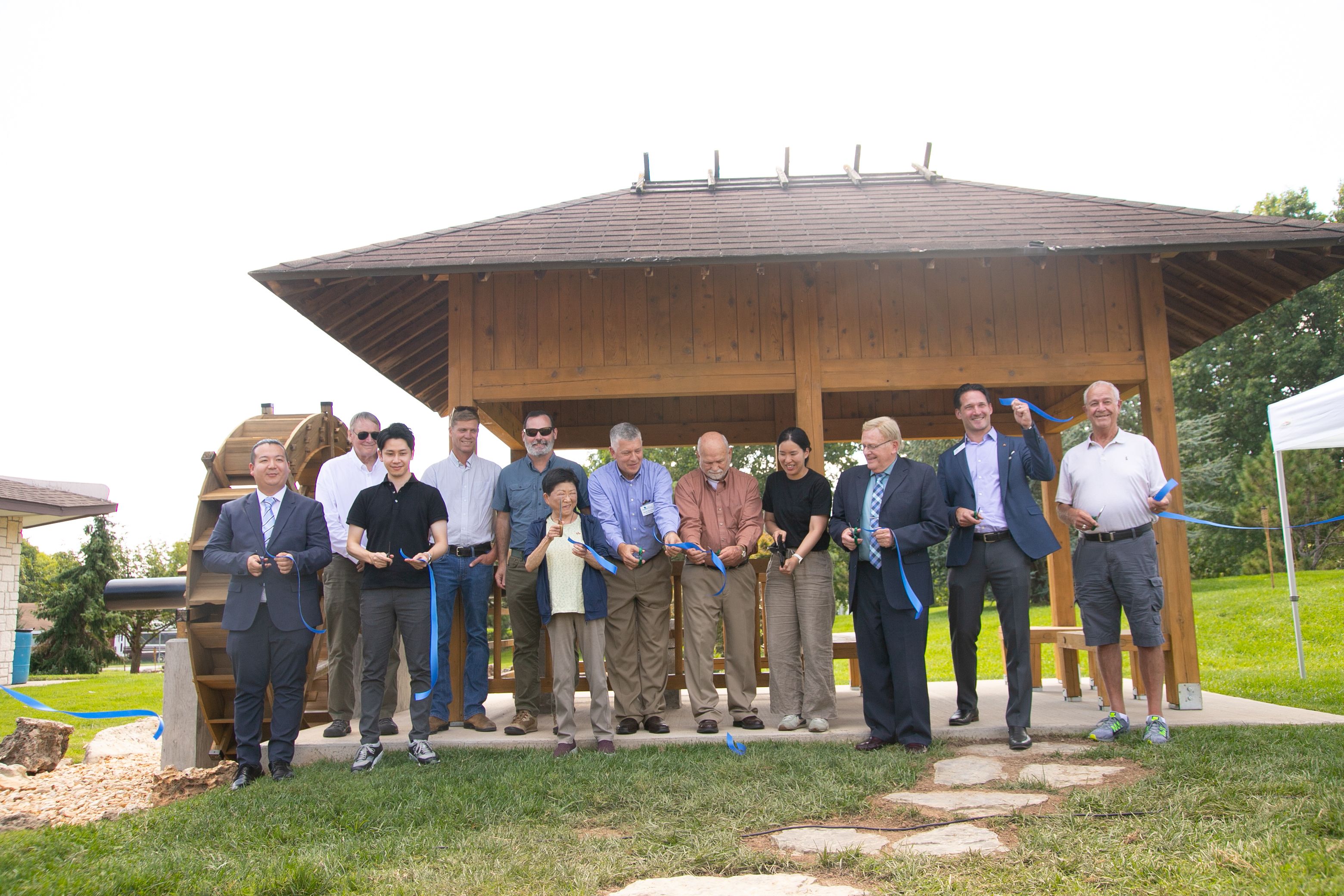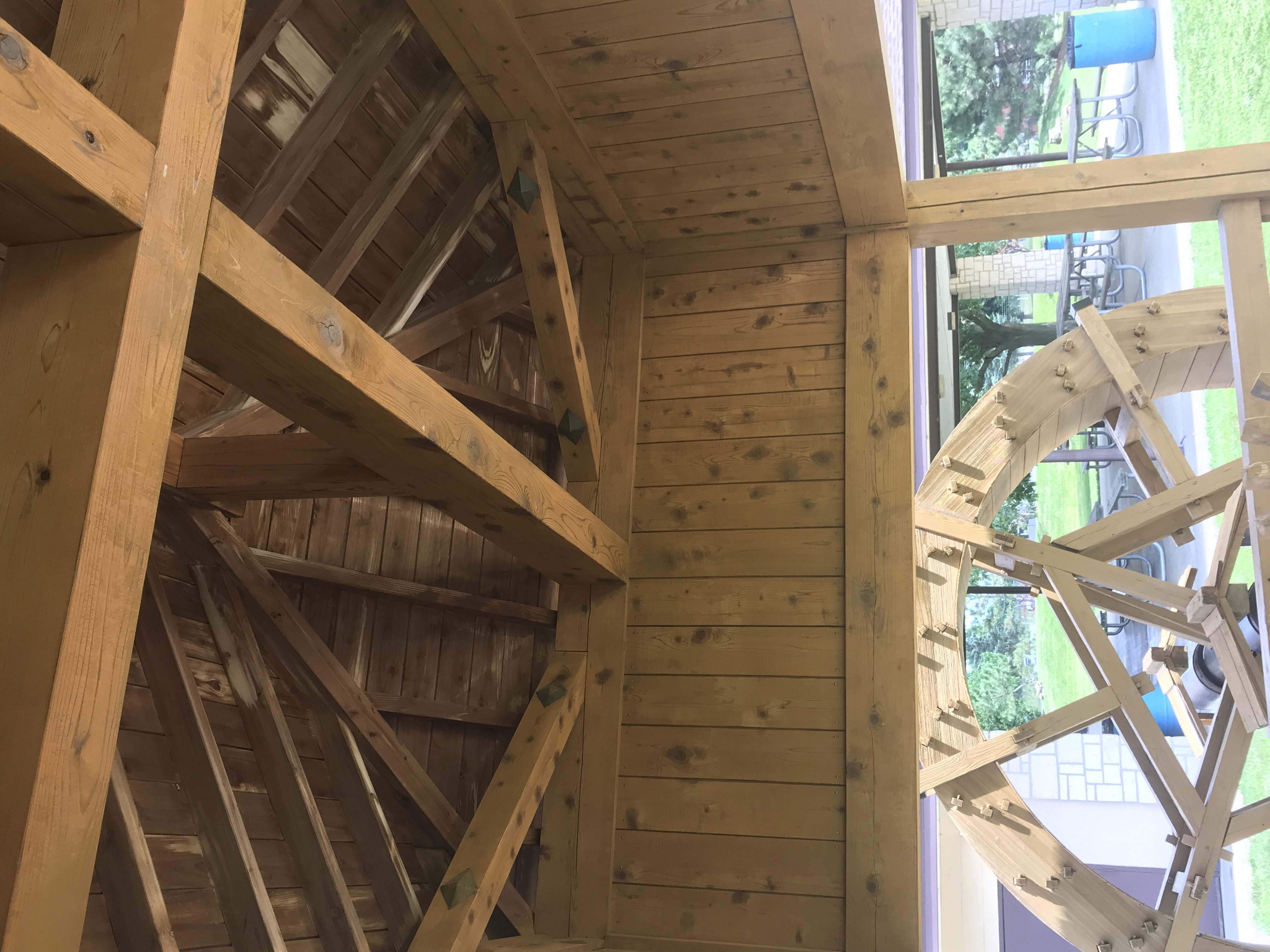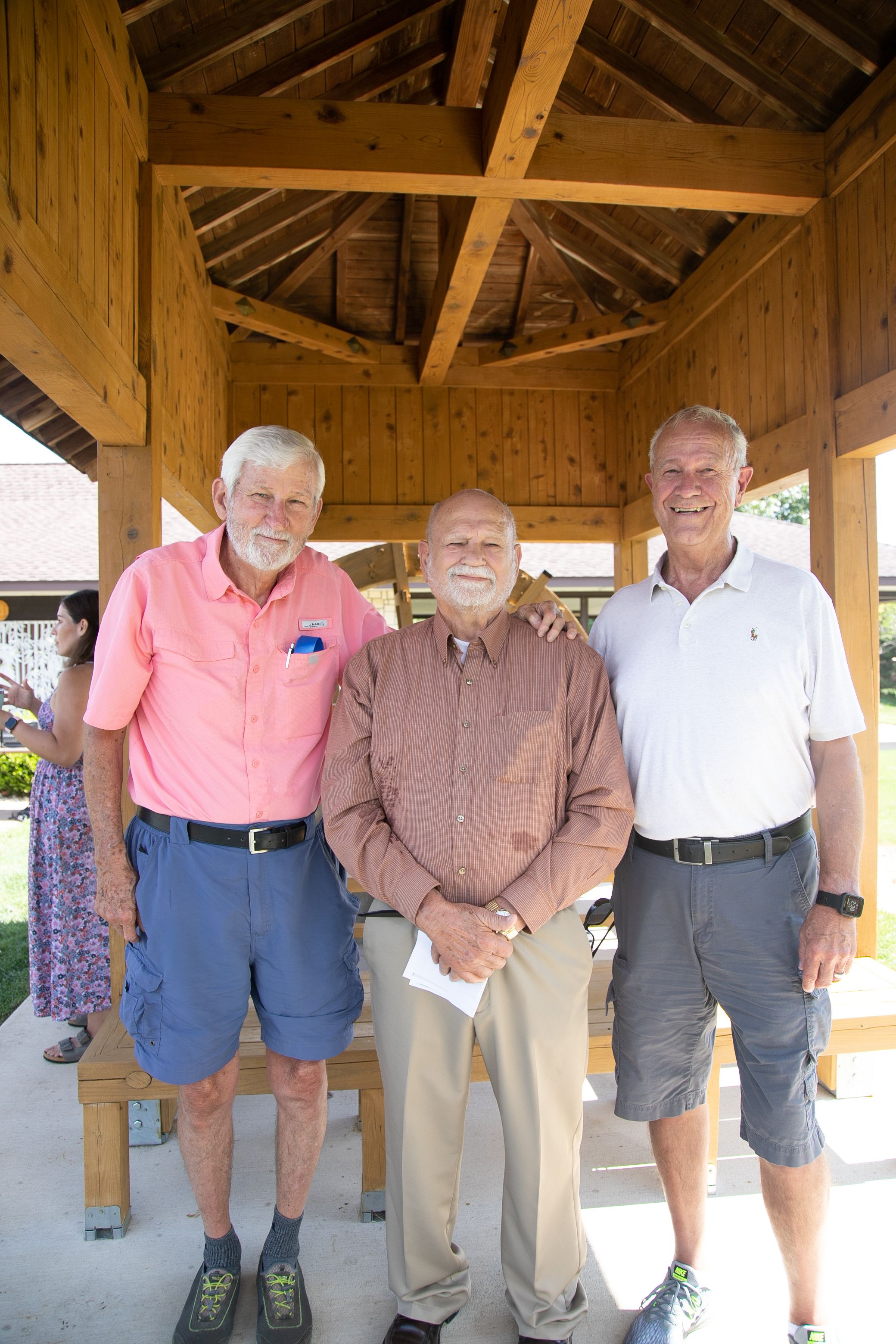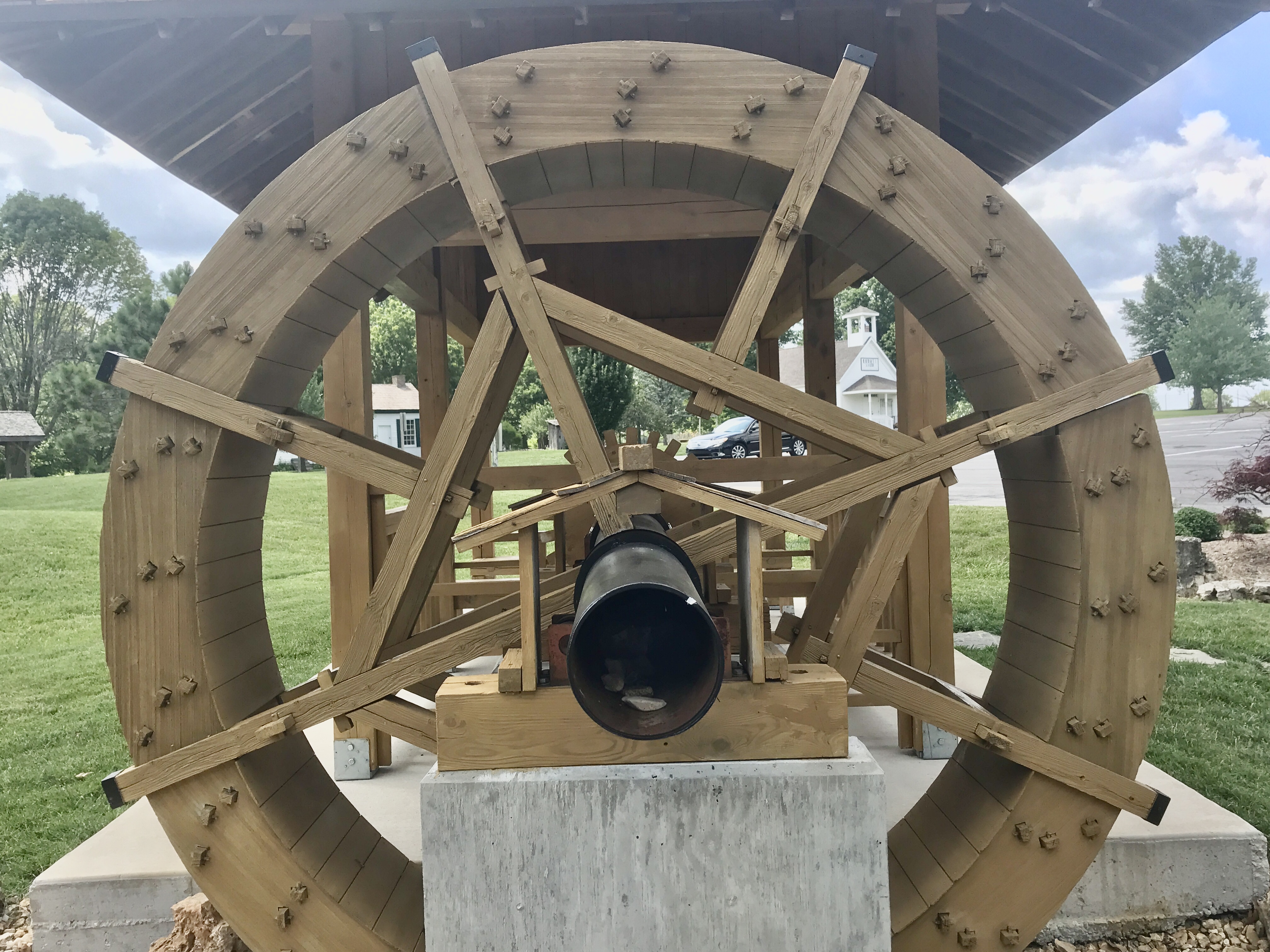Answer Man: What happened to the cool all-wood structure that was a gift to Springfield decades ago from our sister city in Japan? It was on a concrete pad between Historic City Hall and the Busch Municipal Building, 840 N. Boonville Ave. Please tell me it was moved to the Mizumoto Japanese Stroll Garden. — Dennis Radford-Kapp, of Springfield
Dennis, I am pleased to tell you it was moved last year to a better setting, the Mizumoto Japanese Stroll Garden, which is part of the Springfield Botanical Gardens at Nathanael Greene/Close Memorial Park.
A rededication ceremony was held Sept. 2 after the move.
The work of art is called an azumaya, and was a gift in 1995 from Springfield's sister city of Isesaki, Japan, population 213,000. “Azumaya” means “pavilion” or “pagoda.”

The structure offers a shady place to sit and ponder the mysteries of life — or not.
It has a roof, but no walls and includes an 8-foot water wheel. It is made of cypress and cedar.
The gift arrived in four large crates in 1995, says Charlie (Bob) Turner, then Springfield's assistant director of public works. He left the city in 1998 and today, at age 79, is the floodplain manager for St. Francois County.
It was a crew of 5 carpenters, plus interpreter
Turner remembers the project well, especially the construction crew from Japan.

A week after the crates arrived, the crew of five carpenters arrived from Japan.
Turner's biggest fear back then was over the fact that the dimensions for the foundation the city would need to build were provided in metric units. It was up to him to convert the measurements to feet and inches.
The Japanese contingent included four men in their twenties and a supervisor who was about 35 to 40, Turner says. None spoke a word of English, Turner says. They were accompanied by a female interpreter.
They were here a week, living in a hotel on North Glenstone, Turner tells me.
They brought their non-electric, traditional tools.
“They were all hand tools,” he says. “I was really amazed about their saws. They used hand saws that didn't cut like American saws where we push down and it cuts. Their saws cut when you pulled back.
“They put that together without any nails or any bolts or anything like that. It was kind of like putting together Lincoln Logs,” Turner says.
Turner's great moment of anxiety was when centimeters met inches and, fortunately, the structure fit the foundation perfectly.
After a day's work, how about a few back flips?
Turner spent much time at the job site, observing the Japanese workers.

The crew seemed to have a good time, he says.
“I think so. I enjoyed them. At no time did we have any kind of disagreement,” Turner said. “I was there really to help them, whatever they needed. They did a lot of laughing. I did a lot of communication with their interpreter.”
No, our visitors did not see the sites while here. They did not go, for example, to Silver Dollar City, Turner says. They focused on their work.
Turner remembers that one of the young men from Japan was a gymnast. At the end of a work day, this young man did several back flips right before Turner's eyes.
That matches a story recalled by Tom Finnie, Springfield's city manager at the time.
Finnie said the Japanese crew went to Walmart for an evening shopping trip.
“The Japanese carpenters dressed in what we would call black pajamas,” Finnie says. “That was their uniform. And that caught the attention of some of the kids in the store, who thought they looked like ninjas.”
The Japanese crew picked up on that, Finnie recalls, and at least one of them — most likely the gymnast — did a series of cartwheels down a Walmart aisle.

In hindsight, it wasn't a great location
The location first selected for the azumaya — between Historic City Hall and the Busch Municipal Building — is called Friendship Park.

It was not ideal, Finnie says. There wasn't much foot traffic.
In addition, according to Jenny Fillmer Edwards, spokesperson for the Springfield-Greene County Park Board, the spot was not an oasis of serenity due to its proximity to noisy HVAC units.
The azumaya was showing its age, Edwards says, and some Greene County organizations came to the rescue.
Carpenters Local No. 978 stepped up to repair and renovate it and general contractor Carson-Mitchell, Inc., donated use of a giant crane to help move it to the Mizumoto Japanese Stroll Garden, where a concrete foundation created by Conco Companies was waiting.
Also assisting was the Springfield Sister Cities Association. Springfield has a second sister city: Tlaquepaque, Mexico.
I noticed in reporting that the Japanese stroll garden was created in 1985 and our sister-city connection to Isesaki commenced the next year. Apparently there is a link because gardeners from Isesaki helped create the stroll garden.
Once the repair to the azumaya was complete, it seemed a good time to find a new and better site, Edwards said.
Serenity now, at new location

I went there to take photos. The azumaya is at the entrance gate to the stroll garden.
It looks like it was meant to be here. By my calculations, it's a bit closer to serenity.
In a Sept. 27, 1995 story in the News-Leader, Finnie was asked how the city was going to respond to the gift.
“I don't know how you reciprocate something like this,” he was quoted as saying. “It overwhelms you.”
Did the city ever reciprocate?
To the best of Finnie's knowledge, it did, but on a small scale. The City of Springfield sent a framed letter of appreciation from city leaders.
The five-man work crew left Springfield without their tools — by design. They wanted to give them away.
Finnie says they gave them to a Japanese family that ran a Japanese-style restaurant at the Battlefield Mall in 1995.
They also left Turner a miniature-scale model of the azumaya.
He kept it and took it with him to job stints as the public works director in Little Rock, Arkansas, and then Ascension Parish in Louisiana.
Finally, Turner says, he realized it didn't truly belong to him. He gave it to the City of Springfield and it's on display at the Busch Municipal Building.
This is Answer Man column No. 42.

